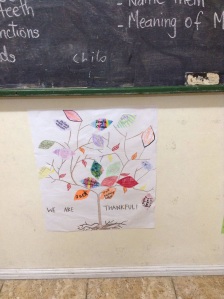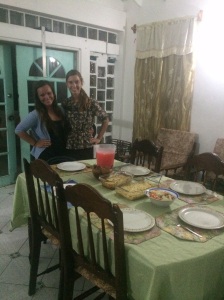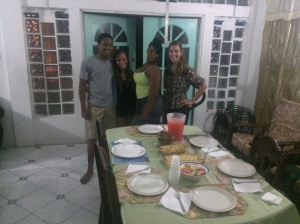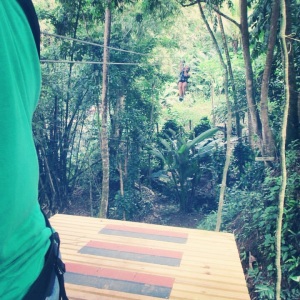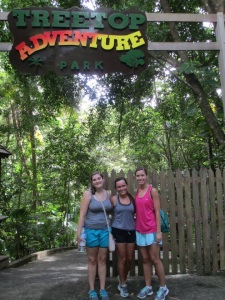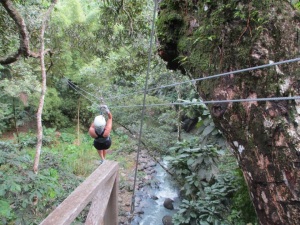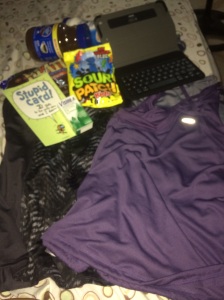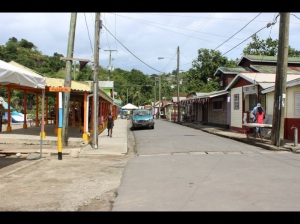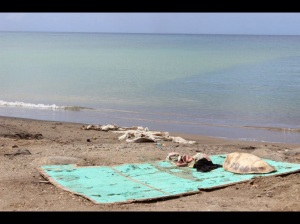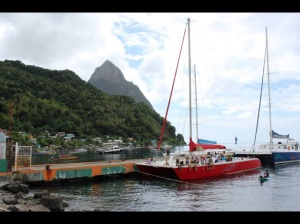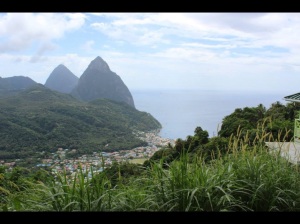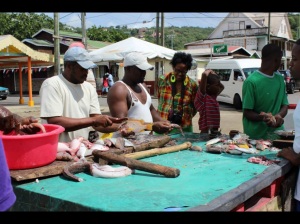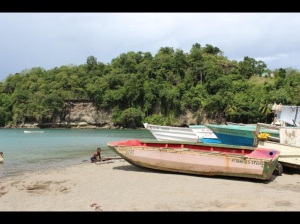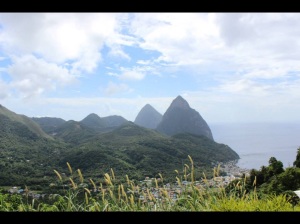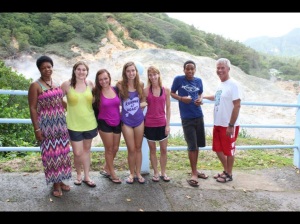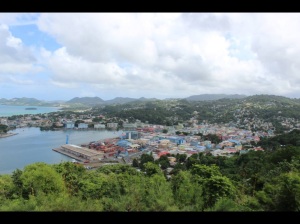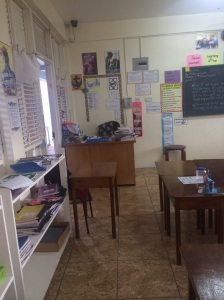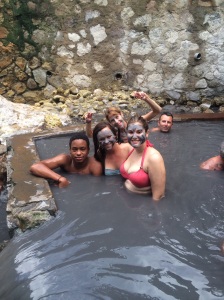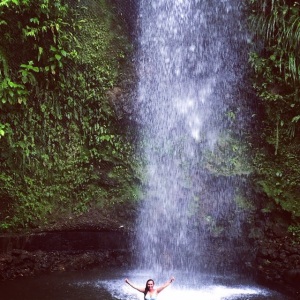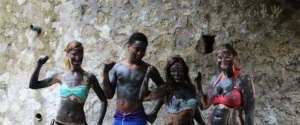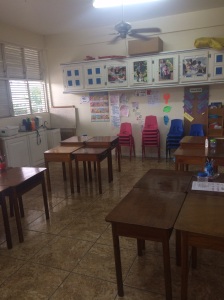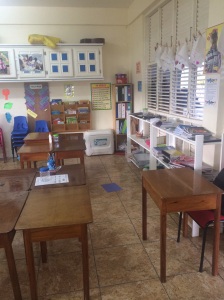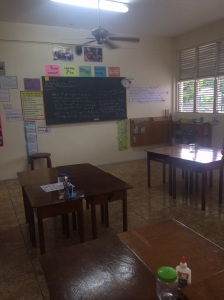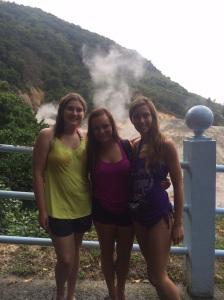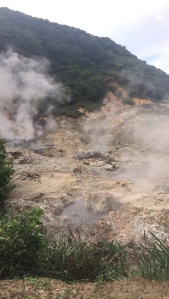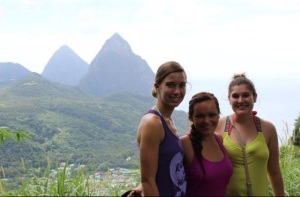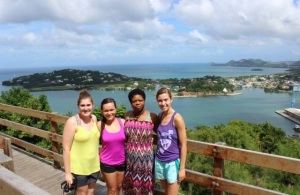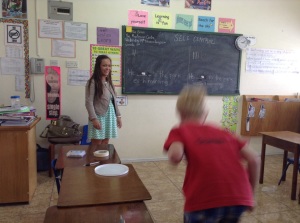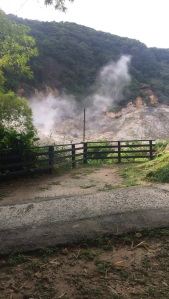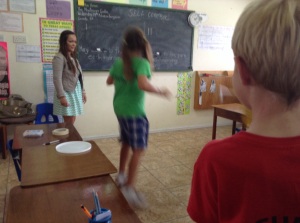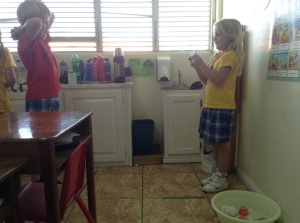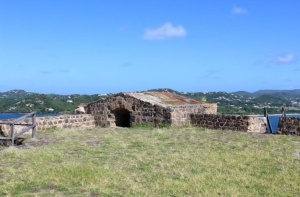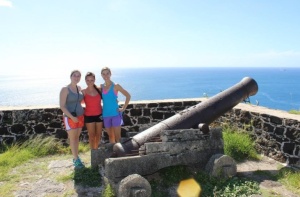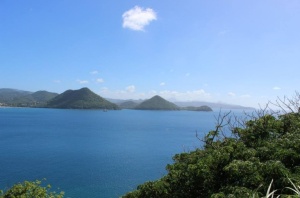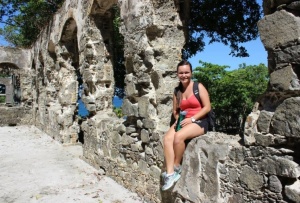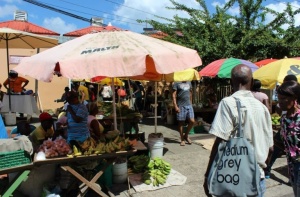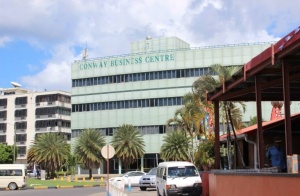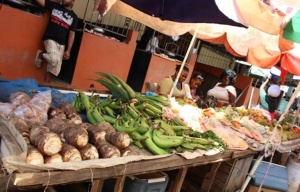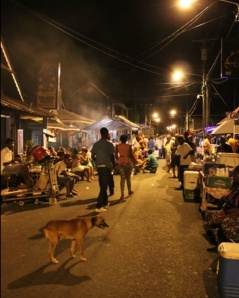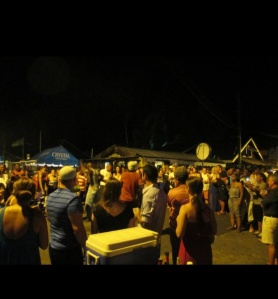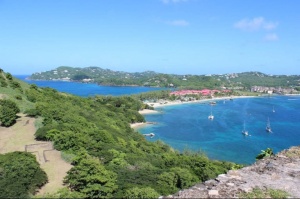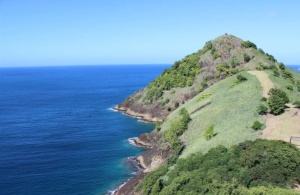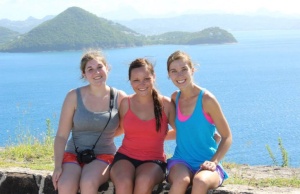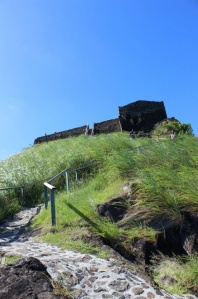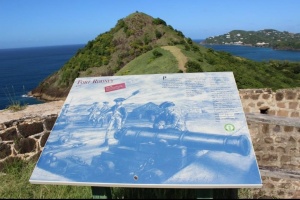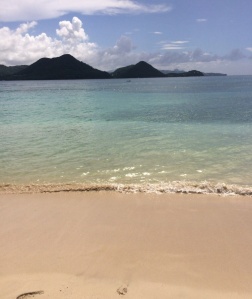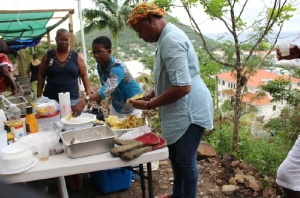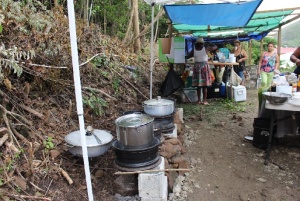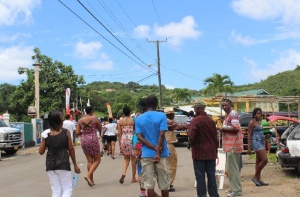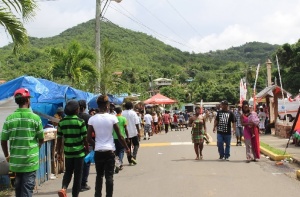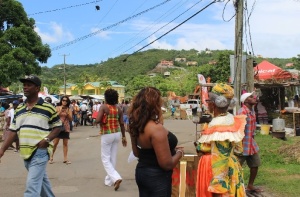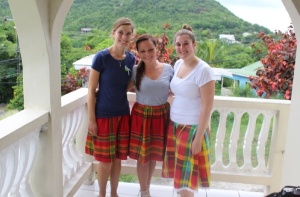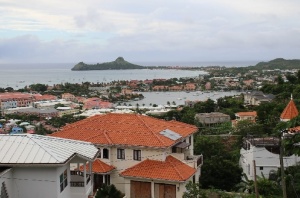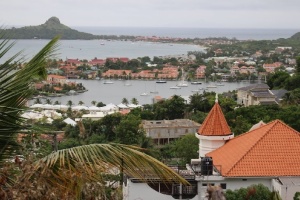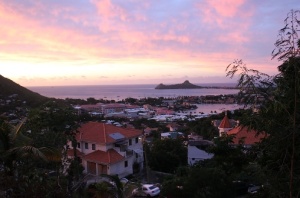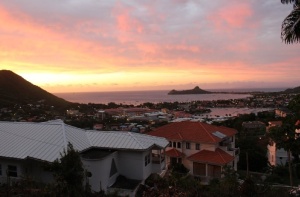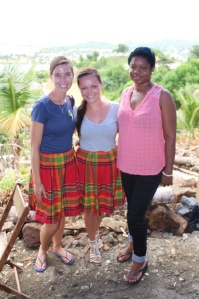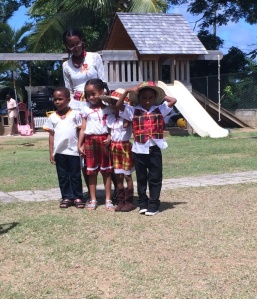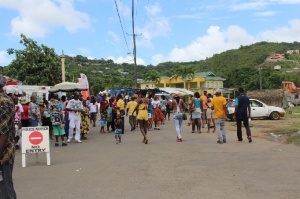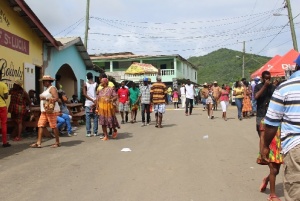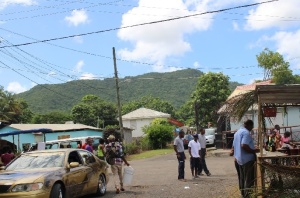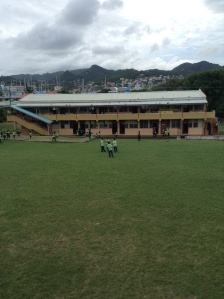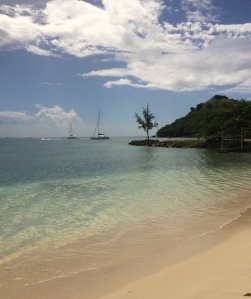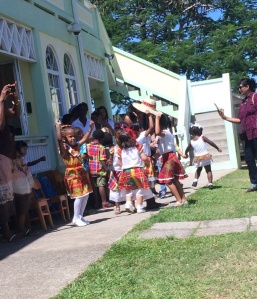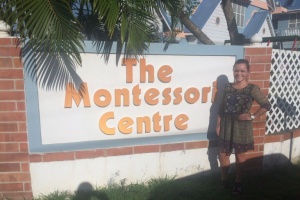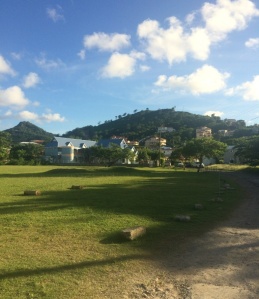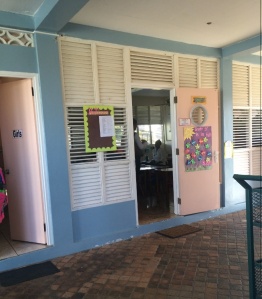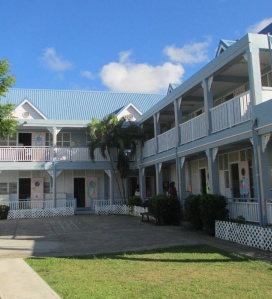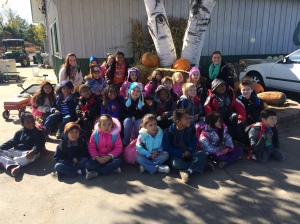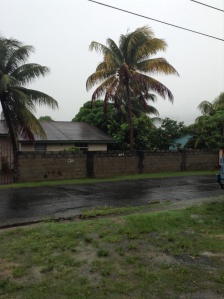
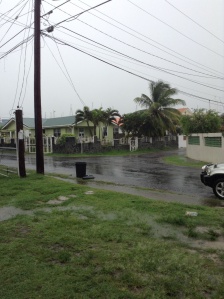
The not so simple task of noticing has been made possible by this dreary day. Today I have realized that the insight gained when you simply take the time to notice your surroundings can be quite pleasing. Thus far, if I could only take one learning experience back with me, I think all of the St. Lucian’s would agree that it is an essential part of life to take time to notice. By notice I mean really taking the time to become invested in each and every moment of the day. All too often, my days are rushed, and I find myself looking ahead to future endeavors. With this, I lose sight of the happenings in the present, and fail to recognize my gradual improvements and achievements. Little to no time is spent noticing the little things that happen from day to day. For the rest of my time here, I am making it a priority to notice more. On this rainy day, (there is nothing to do when it rains) I spent a little time noticing the little things about my daily life here and the culture. Here is what I came up with:
1. I wake up each morning anywhere from 3AM-5AM to the sound of many wild roosters outside of my window. Although at first it was an annoyance, it has become a more natural alarm than my phone.
2. I wake up in a sweat to a sunlit room, only to check the temperature to find that it is already 85 degrees at 5AM.
3. I brace myself for the cold, yet refreshing shower each morning. Although the water pressure is lacking, and it is a good day if I am able to rinse all of the shampoo and conditioner from my hair, I am grateful to have running water and the opportunity to shower each day.
4. I do not have to apply makeup each morning to feel ready for the day. Makeup products are rarely worn here. Although this might seem minuscule to some, it is a great accomplishment for myself. It was an uncomfortable transition at first, but it is refreshing knowing that makeup doesn’t need to be worn daily in order to increase my confidence and sense of beauty.
5. I sleep with the windows open, fan on and no covers in mid November.
6. Time spent with family after a long work day is time to be treasured. Eating traditional meals and listening, dancing and singing to traditional St. Lucian music makes for a great bonding experience.
7. I often walk around the community of Gros Islet, and find that all residents sit outside of their homes conversing with all who happen by or live near. Their friendly personalities are to be envied. If only I witnessed this type of interaction at home more often!
8. I have the ability to walk down the street, and be completely surrounded by the beautiful Caribbean Sea. As I watch and listen to the waves, I realize that these people have been blessed with this beauty so close to home each and every day.
9. I have the opportunity to observe the happiness and kindness portrayed by all community members. This is regardless of whether or not their home is one bedroom with a floor made of dirt, and built out of wood with a tin roof.
10. I do not have my own vehicle, so I must rely on public transportation (a bus that is more like an extended van. There are no specific times for buses to arrive at bus stops. Drivers come and go as they please.) and my host family. It is rare for individuals to own vehicles on the island. The public transportation is utilized often.
11. Time is not of the essence. The phrase “a little while” is equivalent to the duration if three or more hours. Each person moves at his/her own pace, with little attention payed to punctuality. It is not a lack of motivation, but rather a means of avoiding becoming overwhelmed and remaining relaxed. This is where the noticing comes in. They take time to notice the small happenings and their surroundings each day.
12. I have the luxury of drinking fresh squeezed juice from the cherry and golden apple trees in our backyard. St. Lucians take great pride in their many local juices.
13. I understand that the horns and hazards can be used for much more positive and productive measures. The horn is used for offering thanks, informing other drivers that you are coming around the sharp corners and/or steep hills that make up much of the landscape, and simply saying hello. The hazards are used for vehicles to inform other drivers that they are letting them turn in front of them.
14. There are no speed limits, road signs or lines to divide the road. They drive in accordance to what is courteous, and what they believe to be safe. There is a lot of responsibility put on the drivers.
15. At a gastation, you never get out of your car to pay for or fill your own tank. An attendant is waiting at each pump to take your money and insert the gas. Oh, how wonderful this service would be in Wisconsin during the winter months.
16. I do not start each day with coffee, but am able to persevere through the school day regardless!
17. Teachers leave kind gestures such as mangos and avocados on each other’s desks to show a sign of appreciation for one another.
18. At school, attendance, snack and lunch count is taken manually with a pen and paper. Teachers do not have their own computers, and there are not projectors or Elmo’s in the classroom. There are not speakers in each classroom, instead all messages are passed along from one teacher to the next using a clipboard.
As I prepare for my fourth week of teaching, I cannot believe how fast time is going. I am forming such great relationships with the teachers at the Montessori Centre, and they are always concerned about my well being. They always ensure that I am comfortable, and have everything that I need to feel at home. It is comforting knowing that I have such a big support system while I am here. It definitely assists in keeping my mind off of home. During planning on Wednesday afternoons, the teachers are always sure to ask for my input. They appreciate that my teaching mindset falls strongly on explicit modeling. They are always interested to hear my ideas for re-teaching and modeling concepts that the students may not have grasped the first time. The various perspectives often make planning sessions long, but I am always able to leave with new cultural perspectives and ideas.
This week, I will be adding on health science. The focus of my lessons will be caring for your teeth. I am excited for a few activities that I have planned, and am hoping that parents will begin returning forms so that I can release and post pictures of my students during my lessons! As for grammar, I am still teaching verb tenses. We will be reviewing subject/verb agreement and I will be introducing the simple present tense and the present continuous tense. In phonics, I will be reviewing consonant blends. Although it is the first time that the concept will be reintroduced in grade three, it is definitely not the first time that they have been introduced to consonant blends. Therefore, my lesson will consist of a simple introduction and explanation, and then an activity for practice with pronunciation and known words that have “l” blends.
One last thing. I never shared my students weekly schedule. One major difference is that there are many different classes throughout the day that would normally be incorporated into one single class. The classes are usually only held once or twice a week. I never know which class is coming next, and I probably never will before I leave! Here is a list of the classes:
1. Assembly (every Monday morning, the various grades put on a skit based on the theme for the week, and many songs are sung. Assembly provides the students will a great opportunity to participate in something with the entire school coming together.)
2. Grammar
3. General Science
4. Spanish
5. Phonics
6. Health Science
7. Literature Circles
8. Comprehension
9. Football(soccer)/track
10. Writing workshop
11. Composition
12. Library
13. French
14. Spelling
15. Music
16. Technology
17. Stations
18. Class meeting
19. Social Studies
20. Mathematics

